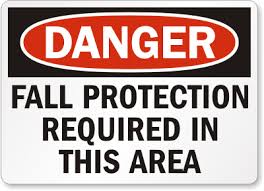 Falls are one of the most common causes of injuries for construction workers. Conventional fall protection methods include guardrail systems, safety-net systems or personal fall-arrest systems. On some sites, however, conventional fall protection methods aren't feasible, and OSHA allows the use of alternate fall protection methods under a properly documented fall protection plan.
Falls are one of the most common causes of injuries for construction workers. Conventional fall protection methods include guardrail systems, safety-net systems or personal fall-arrest systems. On some sites, however, conventional fall protection methods aren't feasible, and OSHA allows the use of alternate fall protection methods under a properly documented fall protection plan.
Sites where a fall protection plan is appropriate may include sites where workers are doing leading edge work, precast concrete erection work, or residential construction work. If you plan to use alternative fall protection methods, you must develop a fall protection plan that meets OSHA requirements. Here's how to develop a fall protection plan:Plan Requirements
- It must be designed for a specific construction site.
- It must be prepared by a qualified person, defined as someone with extensive knowledge, experience and training on fall protection systems.
- The plan must identify:
- The construction activity taking place
- The specific site address where you will use the plan
- The name of the qualified person who prepared the plan
- The date the qualified person prepared the plan
- The plan must explain why conventional fall protection methods are not feasible at the site.
- The plan must explain how your chosen fall protection method will protect your workers from falls and should nclude detailed descriptions of the tasks to be performed, the fall hazards that will be encountered, the location of the hazards, and how your chosen method of protection will reduce or eliminate the hazards.
- The plan must establish controlled-access areas where the fall protection plan will apply and
- Describe how you will limit access to these areas so only authorized workers are able to enter them.
- Describe how you will separate controlled-access areas areas from the rest of your construction site.
- Identify all workers who will have access to the controlled-access area.
- The plan must assign a competent person to implement the fall protection plan who is an expert on fall protection systems and can identify and correct hazardous conditions.
- The plan must describe how workers and supervisors will comply with the requirements.
- The plan must be kept on site, with all of its approved changes.
- Training Requirements
- Fall hazards that are present
- Types of systems to protect from falls
- Their responsibilities under the fall protection plan
- Procedures for assembling, maintaining and disassembling personal fall arrest systems
- Retraining procedures when tasks change, the plan changes, or workers are not following the plan.
- Plan Updates
The plan must be updated as conditions change by a qualified person. Any changes to the plan must describe the site conditions that prompted the change, include the reason for the update, state the date of the update, be signed by the qualified person.
Accidents and Near-misses
Accidents and near-misses must be investigated, and may require you to amend your fall protection plan to prevent similar incidents in the future. You must describe the incident and the corrective actions taken to prevent similar incidents from occurring.
















